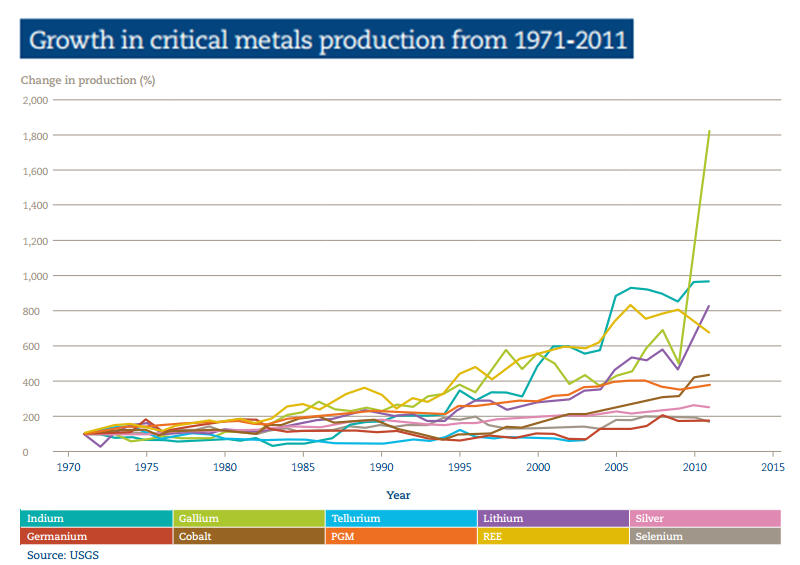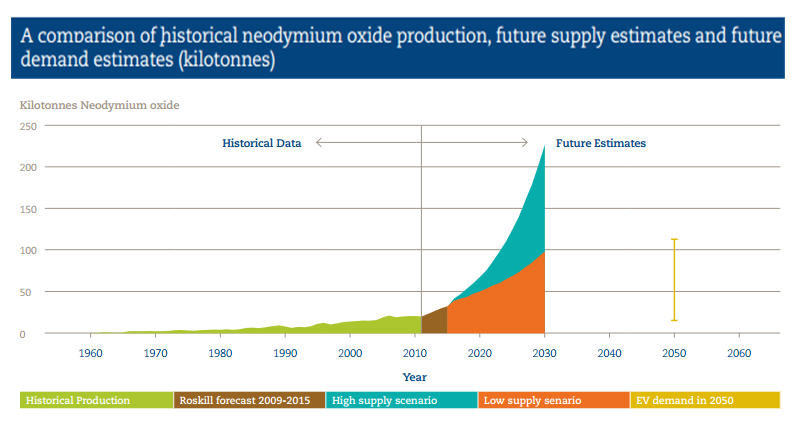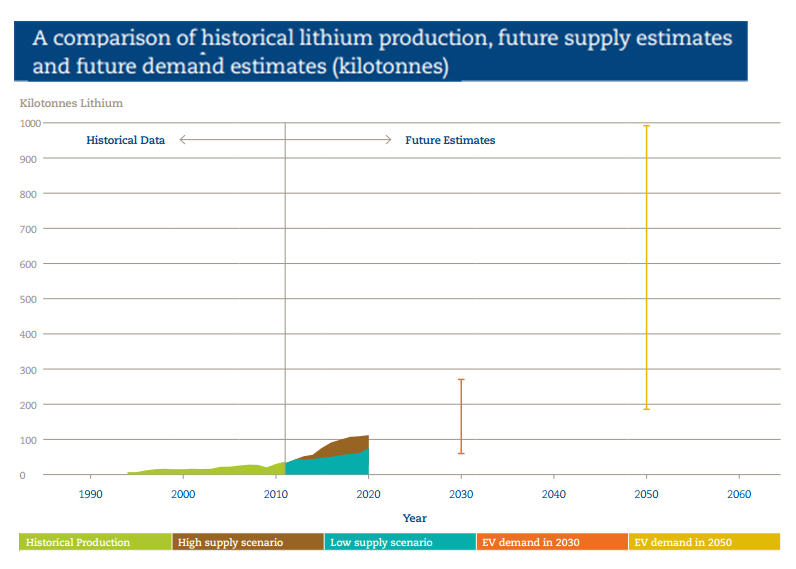CHARTS: Giant gap between future lithium supply, demand

1960 Nu-Klea Starlite Electric Runabout – Nu-Klea Automobile Corp. of Lansing, Michigan hoped to get this electric car into production. Drive was to be “D.C. Electric Motors”. Power was described as “Battery 36 volts”, with “built-in charger”. Body: All Plastic, with optional fiberglass cloth or Plexiglass top. Image: Alden Jewell
New research by the UK Energy Research Centreand the Energy Research Partnership looking at materials availability for green technologies finds critical metals used to manufacture low-carbon energy technologies “is rising rapidly and requires serious attention from industry and policymakers.”
However says the report “scaremongering about scarcity is misguided” as there is “little evidence to suggest that resource availability or depletion is affecting production growth now and/or in the short term.”
This chart shows rising production of 10 of these raw materials used in electric vehicle batteries, photovoltaics for solar polar, hydrogen fuel cells and wind turbines among others in response to rising demand:

Source: UKERC
The study zoned in on lithium and rare earth element neodymium, critical components of electric vehicles, which are also not easily substituted. The report notes there is currently no efficient substitute for lithium-based EV batteries “given the unparalleled energy density delivered by this chemistry” and no other chemistry provides magnets of the power achievable with neodymium magnets used in permanent magnet motors.
There is no doubt that demand for lithium and neodymium will increase. The International Energy Agency forecasts over 40 million battery electric vehicle sales per year by 2050, from current annual battery electric vehicle sales of only around 150,000 today.
The question is whether future production can meet this demand.
From this chart it’s clear for neodymium the picture is not all that rosy (although the first chart shows REE production is already falling to reflect future demand):

Source: UKERC
Lithium on the other hand, even at the lower end of demand forecasts, will need significant investment in production to meet future needs.

Source: UKERC
The authors do caution that the wide supply-demand ranges is a reflection of “the wide range of assumptions in the literature and the uncertainty in estimates of critical metals futures.”
This chart presents a cumulative availability curve for lithium, highlighting the very large quantities of resource available if consumers are willing to pay the
high cost of extracting lithium from sea water.
This indicates the physical challenges associated with extracting metals from geological sources with ever-decreasing metal concentrations, and the ever-increasing costs associated with recovering these metals, says the report.
Click here to download the full report.
{{ commodity.name }}
{{ post.title }}
{{ post.date }}


2 Comments
Mark Harder
I’m still stuck on that first graph, where the growth of Gallium production has become exponential. What’s that about?
MINING.com Editors
It does seem to be an anomaly. The authors of the report do stress the dearth of available data:
“The USGS MCS for gallium, for example, has not reported production, reserves or reserve base data since the beginning of its
online archive, citing the proprietary nature of producer data. The US proportion of production is also omitted for many of the metals covered in the USGS MCS publication, again citing issues of data ownership. Specialist studies can be used to cover some of these omissions, such as International Study Groups (Willis et al. 2012) or consultancy reports (Chegwidden & Kingsnorth 2011).”
-Frik